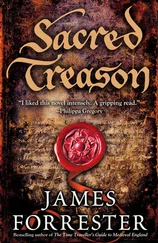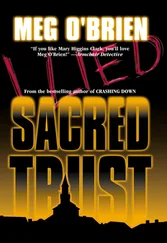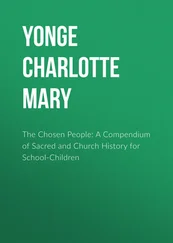Well, she will do the best she can. Though it would be better if she could find an assistant among the novices, a young soul with energy and aptitude, so that together they might form a chain, to hand on to those who come after the fruits of that which she now knows.
Tomorrow she will talk to the abbess about it.
She closes her eyes and sleeps. And the convent sleeps silently around her.
ALL THE CHARACTERS in this novel are imaginary, as is the convent of Santa Caterina, though its history and architecture draw on Sant’Antonio in Polesine, in Ferrara, which still exists today as an enclosed Benedictine community.
The history in which the novel is embedded, however, is all fact.
One of the final decrees of the Council of Trent before it disbanded in December 1563 was a rushed but detailed reform of nunneries, in response to the fierce challenges and criticisms thrown up by the Protestant Reformation. These changes, which were extensive, took time to be implemented, depending on the zeal of the local bishops, the order, the convent, and the opposing influence of local families.
But eventually reform did come. In the city of Ferrara, the power of the d’Este family protected the convents for a while, but the failure of Duke Alfonso III to produce a legitimate heir, despite three wives, meant that in 1597, after his death, the city and its dominions were absorbed into the Papal States. By the turn of the century, when rampant dowry inflation resulted in almost half of all noblewomen in Italian cities becoming nuns, convent life had changed forever.
Inspections—or visitations, as they were known—brought in the new rules. All contact with the outside world was brutally restricted: stray holes or windows bricked up, grilles put in place everywhere. Walls were made higher (sometimes with the last courses of bricks put up without mortar, in case anyone should try to lean a ladder against them, to climb in or out). Churches were redesigned so that the congregation saw nothing of the nuns within. Parlatori were similarly divided, with grilles and drawn curtains so that families could no longer freely mingle. Performance and music suffered particularly. In some cities, plays and all forms of polyphony were banned, and convent orchestras—apart from a single organ—prohibited. Inspectors visited nuns’ cells and confiscated furniture, books, and all kinds of “luxuries” and private possessions.
This repression did not go unchallenged. Once the inspectors had gone and the gates were closed, in many convents a certain laxity returned, and the battle went on over a number of years. In some places the nuns refused such changes; in a few they even fought physically to retain their freedoms. They were, however, always subdued.
In terms of documentation, a few voices of protest have survived. In the early 1600s, Arcangela Tarabotti, the eldest of six daughters and lame from birth, wrote a polemic on the evils of enforced convent entry that was published some twenty years later. Perhaps as poignant and more succinct is the following fragment from a letter sent in 1586 by a nun from Santi Naborre e Felice convent in Bologna to the pope himself:
Many of us are shut up against our will and deprived of all contact with the outside world. Living with such strictness and abandoned by everyone, we have only hell, in this world and the next.
This novel is dedicated to those women, and to the legion of others who came before and after them.
THANK YOU TO the staff of the British Library who, with unfailing efficiency and good humor, delivered truckloads of books to Humanities Reading Room One, a place where, should one be able to find a seat, a writer comes close to heaven on earth in London.
Vivian Nutton, Professor of the History of Medicine, University College, was kind enough to help me with the medicine and science of the time; Professor Kate Lowe at Queen Mary’s College, University of London, was boundlessly generous and knowledgeable about the world of Italian Renaissance nuns; and Professor Craig Monson at Washington University, St. Louis, and Laurie Stras and Deborah Roberts of the innovative musical consort Musica Secreta all opened my ears and my heart to the wonders and complexities of convent music. Sacred Hearts owes a great deal to all of them. Its mistakes, however, are entirely my own.
In Ferrara, Italy, visits to Corpus Domini and Sant’Antonio in Polesine provided emotional as well as physical geography, while the city itself is so welcoming and visually evocative of its past that I fail to understand why it isn’t overwhelmed by tourists (though that is also one of its great pleasures).
I am grateful to Professor Elissa B. Weaver and to Cambridge University Press for allowing me to quote some lines of translation from her 2001 book on convent theater (details in the bibliography).
As always, deepest thanks go to Clare Alexander and Sally Riley my agents; my American editor, Susanna Porter; and in London, Elise Dillsworth and the one and only Lennie Goodings, head of Virago Press.
Writers are not the most even-keeled of human beings when working on a book. I’d like to apologize to my daughters, Zoe and Georgia, for the excessive number of conversations about nuns in our house, and, for their critical support, to thank Eileen Horne, Christopher Bollas, Gillian Slovo, Maria Maragonis, Don Guttenplan, Ian Grojnowski, Scarlet MccGwire, Joseph Calderone, Sue Woodman, Christina Shewall, and Isabella Planner. But final thanks must go to Tez Bentley who, as well as giving my words the polish of his rigorous subeditor’s pen, suffered (and I do not use the word lightly) alongside me when the going got really rough. It is fitting, perhaps, that for a novel with no men within it there should have been one on the outside whose sanity and generosity kept me from madness.
— London
May 2009
www.sarahdunant.com
Anderson, Frank J. An Illustrated History of the Herbals. Columbia University Press.
Baernstein, P. Renee. A Convent Tale. Routledge Press.
Baxandall, Michael. Painting and Experience in Fifteenth-Century Italy. Oxford University Press.
Bell, Rudolph M. Holy Anorexia. University of Chicago Press.
Bornstein, Daniel, editor. Women and Religion in Medieval and Renaissance Italy. University of Chicago Press.
Broedel, Hans Peter. The Malleus Maleficarum and the Construction of Witchcraft. Manchester University Press.
Brown, Judith C. Immodest Acts: The Life of a Lesbian Nun in Renaissance Italy. Oxford University Press.
Burke, Peter. Popular Culture in Early Modern Europe. Scholars Press.
Bynum, Carolyn Walker. Holy Feast and Holy Fast: The Religious Significance of Food to Medieval Women. University of California Press.
________. Jesus as Mother. University of California Press.
Camporesi, Piero. The Anatomy of the Senses. Cambridge Polity Press.
________. Bread of Dreams. Cambridge Polity Press.
________. The Incorruptible Flesh. Cambridge University Press.
Cardono, Girolamo. “The Book of My Life.” New York Review of Books, 2002.
Clark, Stuart. Thinking with Demons. Clarendon Press.
Dear, Peter. Revolutionizing the Sciences: European Knowledge and Its Ambitions 1500–1700. Princeton Paperbacks.
Debus, A. G. Man and Nature in the Renaissance. Cambridge University Press.
Eamon, William. Science and the Secrets of Nature. Princeton University Press.
Eisenbichler, Konrad, editor. The Pre-Modern Teenager: Youth in Society 1150–1650. University of Toronto Press.
Evangelisti, Silvia. Nuns: A History of Convent Life. Oxford University Press.
Fenlon, Iain. Music and Culture in Late Renaissance Italy. Oxford University Press.
Читать дальше












